編輯:關於Android編程
Handler是開發人員在面試過程中最常見的問題之一了,這篇文章將較為全面地對Handler進行解讀,包括源碼層,以及使用方法。
如果看完文章有疑問,歡迎在評論中一起探討
基本內容包括:
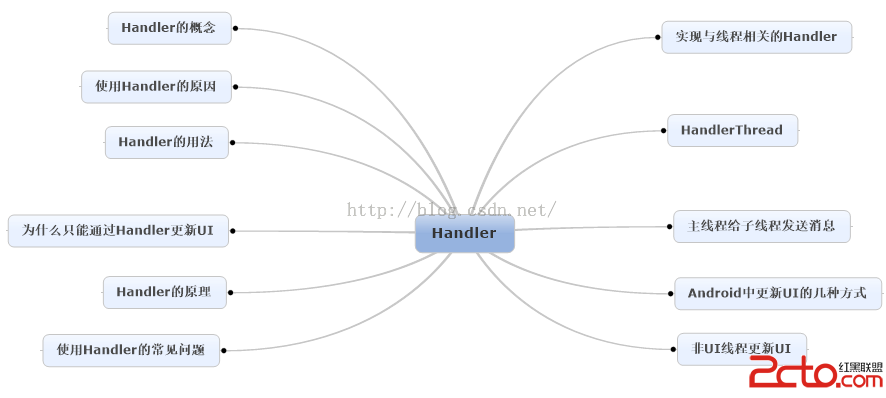
看完文章之後,可以用這個圖片進行復習。
一、什麼是Handler Handler是Android提供用來更新UI的一套機制,也是一套消息處理機制,可以用它來發送消息,也可以用它來接收消息。 二、為什麼使用Handler Android在設計之時,就封裝了一套消息的創建、傳遞、處理機制,若不遵循這樣的處理機制,就沒辦法更新UI信息,並且會拋出異常 三、Handler用法 1、postdelayed()延時發送執行子線程 文字輪詢Demo(實現每隔一秒鐘更新一次Textview的功能)
public class MainActivity extends AppCompatActivity {
private TextView mTextView;
private Handler mHandler = new Handler(){
@Override
public void handleMessage(Message msg) {
super.handleMessage(msg);
}
};
private String[] str = new String[]{"傲慢","偏見","僵屍"};
private int index = 0;
MyRunnable myRunnable = new MyRunnable();
private class MyRunnable implements Runnable{
@Override
public void run() {
index = index % 3;
mTextView.setText(str[index]);
index ++;
mHandler.postDelayed(myRunnable,1000);
}
}
@Override
protected void onCreate(Bundle savedInstanceState) {
super.onCreate(savedInstanceState);
setContentView(R.layout.activity_main);
mTextView = (TextView) findViewById(R.id.tv);
mHandler.postDelayed(myRunnable,1000);
}
}
public class MainActivity extends AppCompatActivity {
private TextView mTextView;
Handler mHandler = new Handler(){
@Override
public void handleMessage(Message msg) {
mTextView.setText(msg.obj+""+ "arg1="+msg.arg1 + " arg2="+msg.arg2);
super.handleMessage(msg);
}
};
private class Person{
String name;
int age;
@Override
public String toString() {
return "name="+name+" age="+age;
}
}
@Override
protected void onCreate(Bundle savedInstanceState) {
super.onCreate(savedInstanceState);
setContentView(R.layout.activity_main);
mTextView = (TextView) findViewById(R.id.tv);
new Thread(){
@Override
public void run() {
Message msg = new Message();
msg.arg1 = 1;
msg.arg2 = 2;
Person person = new Person();
person.name = "pig";
person.age = 10;
msg.obj = person;
mHandler.sendMessage(msg);
}
}.start();
}
}
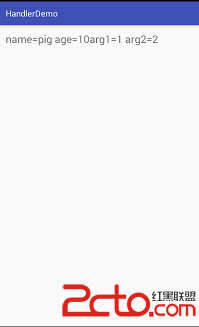
public class MainActivity extends AppCompatActivity {
private TextView mTextView;
Handler mHandler = new Handler(){
@Override
public void handleMessage(Message msg) {
mTextView.setText(msg.obj+""+ "arg1="+msg.arg1 + " arg2="+msg.arg2);
super.handleMessage(msg);
}
};
private class Person{
String name;
int age;
@Override
public String toString() {
return "name="+name+" age="+age;
}
}
@Override
protected void onCreate(Bundle savedInstanceState) {
super.onCreate(savedInstanceState);
setContentView(R.layout.activity_main);
mTextView = (TextView) findViewById(R.id.tv);
new Thread(){
@Override
public void run() {
Message msg = mHandler.obtainMessage();//同樣可以獲取Message對象
msg.arg1 = 1;
msg.arg2 = 2;
Person person = new Person();
person.name = "pig";
person.age = 10;
msg.obj = person;
msg.sendToTarget();
}
}.start();
}
}
public class MainActivity extends AppCompatActivity {
private TextView mTextView;
Handler mHandler = new Handler(new Handler.Callback() {
//傳入CallBack對象,對於重載的返回值為bollean的handleMessage()
//返回值為false,將先執行這個方法,再執行返回值為void的handleMessage()方法
//返回值為true,只執行這個方法
@Override
public boolean handleMessage(Message msg) {
Toast.makeText(MainActivity.this, "截獲消息", Toast.LENGTH_SHORT).show();
return false;
}
}){
public void handleMessage(Message msg) {
Toast.makeText(MainActivity.this, "發出消息", Toast.LENGTH_SHORT).show();
}
};
private class Person{
String name;
int age;
@Override
public String toString() {
return "name="+name+" age="+age;
}
}
@Override
protected void onCreate(Bundle savedInstanceState) {
super.onCreate(savedInstanceState);
setContentView(R.layout.activity_main);
mTextView = (TextView) findViewById(R.id.tv);
Button btn = (Button) findViewById(R.id.btn);
btn.setOnClickListener(new View.OnClickListener() {
@Override
public void onClick(View v) {
mHandler.sendEmptyMessage(0);
}
});
}
}
public static void loop() {
final Looper me = myLooper();
if (me == null) {
throw new RuntimeException("No Looper; Looper.prepare() wasn't called on this thread.");
}
final MessageQueue queue = me.mQueue;
// Make sure the identity of this thread is that of the local process,
// and keep track of what that identity token actually is.
Binder.clearCallingIdentity();
final long ident = Binder.clearCallingIdentity();
for (;;) {
Message msg = queue.next(); // might block
if (msg == null) {
// No message indicates that the message queue is quitting.
return;
}
// This must be in a local variable, in case a UI event sets the logger
Printer logging = me.mLogging;
if (logging != null) {
logging.println(">>>>> Dispatching to " + msg.target + " " +
msg.callback + ": " + msg.what);
}
msg.target.dispatchMessage(msg);
if (logging != null) {
logging.println("<<<<< Finished to " + msg.target + " " + msg.callback);
}
// Make sure that during the course of dispatching the
// identity of the thread wasn't corrupted.
final long newIdent = Binder.clearCallingIdentity();
if (ident != newIdent) {
Log.wtf(TAG, "Thread identity changed from 0x"
+ Long.toHexString(ident) + " to 0x"
+ Long.toHexString(newIdent) + " while dispatching to "
+ msg.target.getClass().getName() + " "
+ msg.callback + " what=" + msg.what);
}
msg.recycleUnchecked();
}
}
public void dispatchMessage(Message msg) {
if (msg.callback != null) {
handleCallback(msg);
} else {
if (mCallback != null) {
if (mCallback.handleMessage(msg)) {
return;
}
}
handleMessage(msg);
}
}
從源碼看出,當有CallBack的時候,會截獲消息,沒有的話會回調handleMessage()來處理消息
而對於SendMessage()系列的方法,這裡不再做過多解析,但從其源碼可以看出,確實是最終把消息傳入了消息隊列中。
六、創建與線程相關的Handler
在子線程中創建Handler,需要通過Looper.prepare()獲取Looper,且調用Looper.loop()方法對消息隊列中的Message進行輪詢
public class MainActivity extends AppCompatActivity {
private TextView mTextView;
public Handler mHandler = new Handler(){//主線程中的Handler
@Override
public void handleMessage(Message msg) {
Log.d("CurrentThread",Thread.currentThread()+"");//打印Thread 的ID
}
};
class MyThread extends Thread{
private Handler handler;//子線程中的Handler
@Override
public void run() {
Looper.prepare();//獲取Looper
handler = new Handler(){
@Override
public void handleMessage(Message msg) {
Log.d("CurrentThread",Thread.currentThread()+"");
}
};
Looper.loop();//輪詢消息隊列
}
}
@Override
protected void onCreate(Bundle savedInstanceState) {
super.onCreate(savedInstanceState);
setContentView(R.layout.activity_main);
MyThread thread= new MyThread();
thread.start();
try {
thread.sleep(500);
} catch (InterruptedException e) {
e.printStackTrace();
}
thread.handler.sendEmptyMessage(1);
mHandler.sendEmptyMessage(1);
}
}
輸出的結果
03-31 20:56:06.498 1804-1816/? D/CurrentThread: Thread[Thread-113,5,main]
03-31 20:56:06.578 1804-1804/com.lian.handlerdemo D/CurrentThread: Thread[main,5,main]
七、HandlerThread
HandlerThread本質是一個Thread,區別在於他在run()之後創建了一個含有消息隊列的Looper,這樣我們在子線程中創建Handler時候只需指定使用HandlerThread中的Looper,不用再調用Looper.prepare(),looper.loop()等,簡化了操作。
Android系統提供的Handler使用的Looper默認綁定了UI線程的消息隊列,所以我們在Handler中不能進行耗時操作,而對於非UI線程,若想使用消息機制,HandlerThread內部的Looper是最合適的,他不會阻塞UI線程。
public class MainActivity extends AppCompatActivity {
private TextView mTextView;
public HandlerThread mHandlerThread;
@Override
protected void onCreate(Bundle savedInstanceState) {
super.onCreate(savedInstanceState);
setContentView(R.layout.activity_main);
mHandlerThread = new HandlerThread("handler thread");
mHandlerThread.start();
Handler handler = new Handler(mHandlerThread.getLooper()){//通過getLooper()獲取Looper
@Override
public void handleMessage(Message msg) {
Log.d("current thread","" + Thread.currentThread());
}
};
handler.sendEmptyMessage(1);
}
}
public class MainActivity extends AppCompatActivity {
public Handler mHandler = new Handler(){
@Override
public void handleMessage(Message msg) {
Log.d("current thread", "" + Thread.currentThread());
Message message = new Message();
message.what = 1;
handler.sendMessageDelayed(message,1000);//向子線程的Handler發送消息
}
};
public HandlerThread mHandlerThread;
public Handler handler;
private Button btn1,btn2;
@Override
protected void onCreate(Bundle savedInstanceState) {
super.onCreate(savedInstanceState);
setContentView(R.layout.activity_main);
btn1 = (Button) findViewById(R.id.btn);
btn2 = (Button) findViewById(R.id.btn2);
mHandlerThread = new HandlerThread("handler thread");//指定HandlerThread的名字
mHandlerThread.start();
handler = new Handler(mHandlerThread.getLooper()){//通過getLooper()獲取Looper
@Override
public void handleMessage(Message msg) {
Log.d("current thread", "" + Thread.currentThread());
Message message = new Message();
mHandler.sendMessageDelayed(message,1000);//向主線程中的Handler發送消息
}
};
btn1.setOnClickListener(new View.OnClickListener() {
@Override
public void onClick(View v) {
handler.sendEmptyMessage(1);//開始發送消息
}
});
btn2.setOnClickListener(new View.OnClickListener() {
@Override
public void onClick(View v) {
handler.removeMessages(1);//停止發送消息
}
});
}
}
結果:
03-31 22:21:11.422 16748-16760/com.lian.handlerdemo D/currentthread: Thread[handler thread,5,main]
03-31 22:21:12.422 16748-16748/com.lian.handlerdemo D/currentthread: Thread[main,5,main]
03-31 22:21:13.422 16748-16760/com.lian.handlerdemo D/currentthread: Thread[handler thread,5,main]
03-31 22:21:14.422 16748-16748/com.lian.handlerdemo D/currentthread: Thread[main,5,main]
03-31 22:21:15.426 16748-16760/com.lian.handlerdemo D/currentthread: Thread[handler thread,5,main]
03-31 22:21:16.426 16748-16748/com.lian.handlerdemo D/currentthread: Thread[main,5,main]
03-31 22:21:20.414 16748-16760/com.lian.handlerdemo D/currentthread: Thread[handler thread,5,main]
03-31 22:21:21.414 16748-16748/com.lian.handlerdemo D/currentthread: Thread[main,5,main]
03-31 22:21:22.414 16748-16760/com.lian.handlerdemo D/currentthread: Thread[handler thread,5,main]
03-31 22:21:23.418 16748-16748/com.lian.handlerdemo D/currentthread: Thread[main,5,main]
九、四種更新UI的方法 1、Handler.post(); 2、Handler.sendMessage(); 第一二種方法事實上沒有本質的區別,都是通過發送消息,在UI線程中更新UI,前面已經做過演示,不再贅述 3、runOnUIThread() 使用方法:
public class MainActivity extends AppCompatActivity {
TextView mTextView;
@Override
protected void onCreate(Bundle savedInstanceState) {
super.onCreate(savedInstanceState);
setContentView(R.layout.activity_main);
mTextView = (TextView) findViewById(R.id.tv);
new Thread(){
@Override
public void run() {
try {
Thread.sleep(1000);
} catch (InterruptedException e) {
e.printStackTrace();
}
runOnUiThread(new Runnable() {
@Override
public void run() {
mTextView.setText("更新UI");
}
});
}
}.start();
}
}
public final void runOnUiThread(Runnable action) {
if (Thread.currentThread() != mUiThread) {
mHandler.post(action);
} else {
action.run();
}
}
可以發現,其本質上仍然是通過Handler.post()方法再UI線程中更新UI
4、View.post()
使用方法
public class MainActivity extends AppCompatActivity {
TextView mTextView;
@Override
protected void onCreate(Bundle savedInstanceState) {
super.onCreate(savedInstanceState);
setContentView(R.layout.activity_main);
mTextView = (TextView) findViewById(R.id.tv);
new Thread(){
@Override
public void run() {
try {
Thread.sleep(1000);
} catch (InterruptedException e) {
e.printStackTrace();
}
mTextView.post(new Runnable() {
@Override
public void run() {
mTextView.setText("更新UI");
}
});
}
}.start();
}
}
public boolean post(Runnable action) {
final AttachInfo attachInfo = mAttachInfo;
if (attachInfo != null) {
return attachInfo.mHandler.post(action);
}
// Assume that post will succeed later
ViewRootImpl.getRunQueue().post(action);
return true;
}
十、在非UI線程中更新UI的方法
先看一個Demo
public class MainActivity extends AppCompatActivity {
TextView mTextView;
@Override
protected void onCreate(Bundle savedInstanceState) {
super.onCreate(savedInstanceState);
setContentView(R.layout.activity_main);
mTextView = (TextView) findViewById(R.id.tv);
new Thread(){
@Override
public void run() {
mTextView.setText("更新UI了");
}
}.start();
}
}
結果:
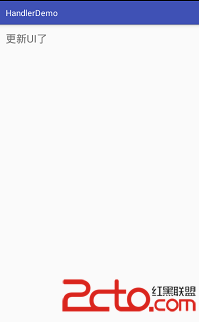
public class MainActivity extends AppCompatActivity {
TextView mTextView;
@Override
protected void onCreate(Bundle savedInstanceState) {
super.onCreate(savedInstanceState);
setContentView(R.layout.activity_main);
mTextView = (TextView) findViewById(R.id.tv);
new Thread(){
@Override
public void run() {
try {
Thread.sleep(2000);
} catch (InterruptedException e) {
e.printStackTrace();
}
mTextView.setText("更新UI了");
}
}.start();
}
}
更新失敗,拋出異常
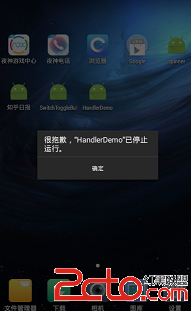
mLooper = Looper.myLooper();
if (mLooper == null) {
throw new RuntimeException(
"Can't create handler inside thread that has not called Looper.prepare()");
}
mQueue = mLooper.mQueue;
mCallback = callback;
mAsynchronous = async;
}
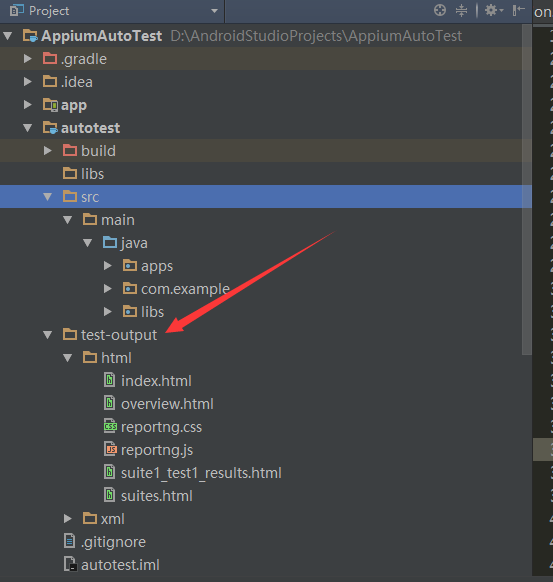 [Android測試] AS+Appium+Java+Win 自動化測試之九:PO模式的實例與ReportNg測試報告
[Android測試] AS+Appium+Java+Win 自動化測試之九:PO模式的實例與ReportNg測試報告
一、介紹准備之前在這篇文章有寫過一個例子,但是這個例子只實現了登錄功能,封裝還是不好的,也不能多個用例執行,現在來用上一篇文章封裝之後的方法來寫實例。封裝和例子代碼已打包
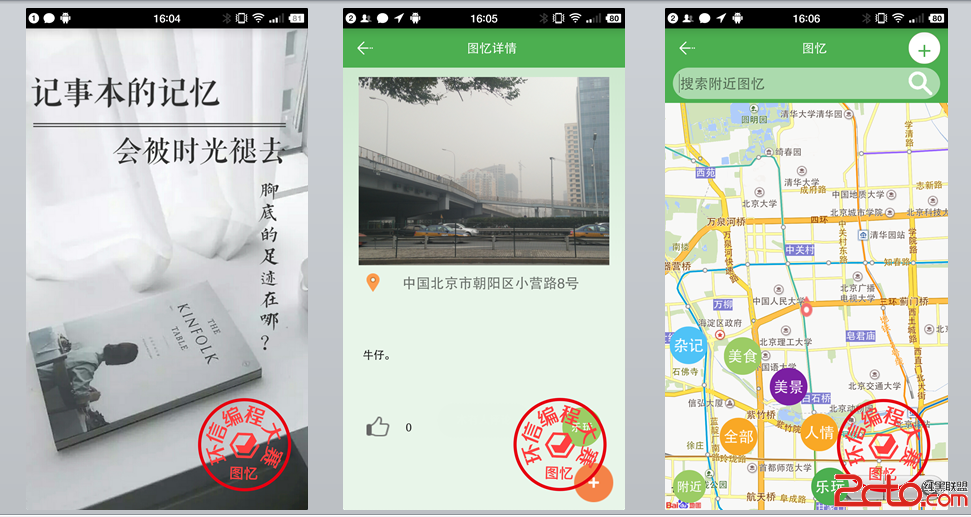 源碼提供!Android即時通訊和sns開源項目匯總
源碼提供!Android即時通訊和sns開源項目匯總
這是一個整理即時通訊(IM)和社交系統(SNS)優秀開源項目的文檔,項目上傳github歡迎提交更新。github地址:https://github.com/Camelo
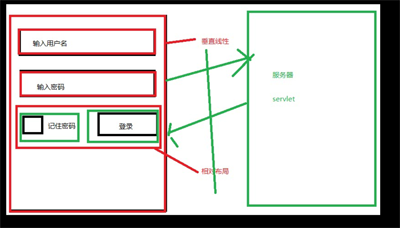 Android開發登陸案例
Android開發登陸案例
layout<?xml version=1.0?>-<LinearLayout android:paddingTop=@dimen/ac
 [React Native]獲取網絡狀態
[React Native]獲取網絡狀態
使用React Native,可以使用NetInfo API獲取手機當前的各個網絡狀態。 componentWillMount() { NetInfo